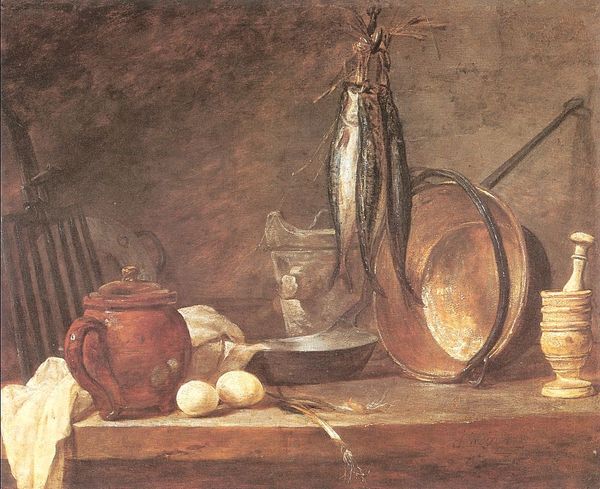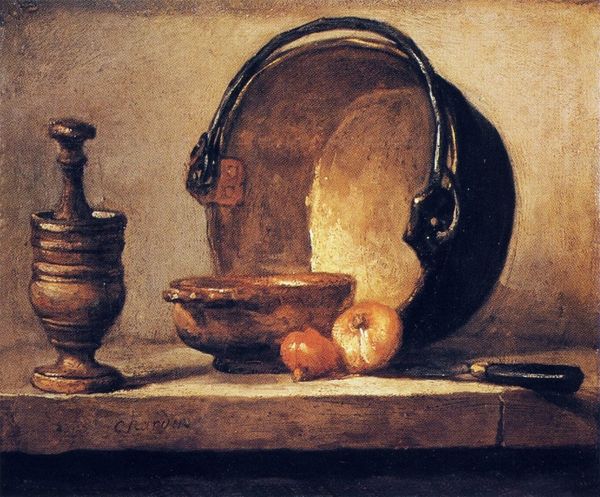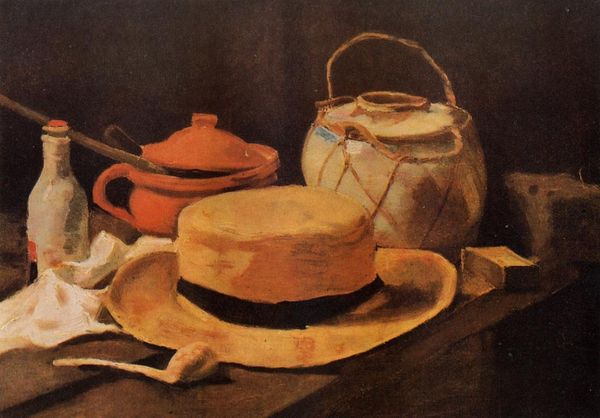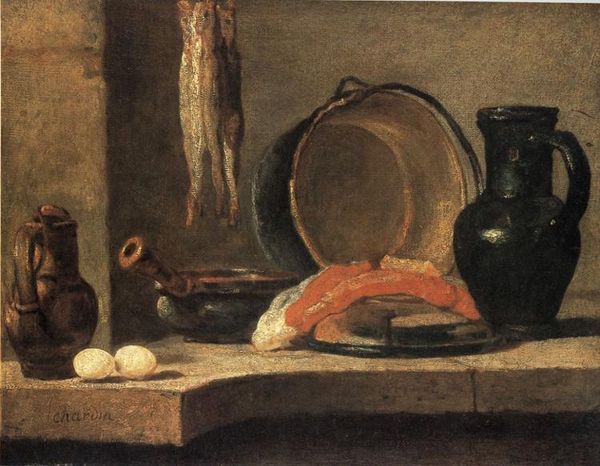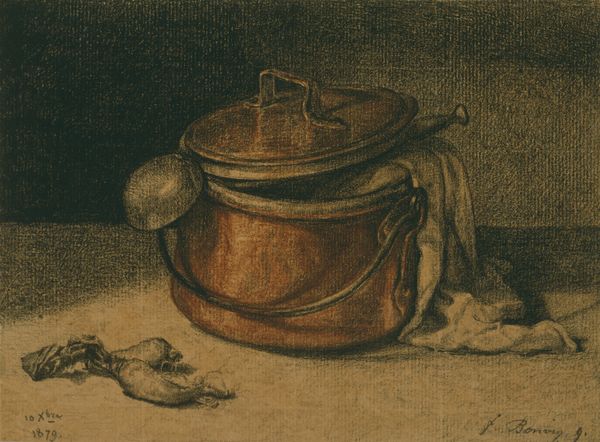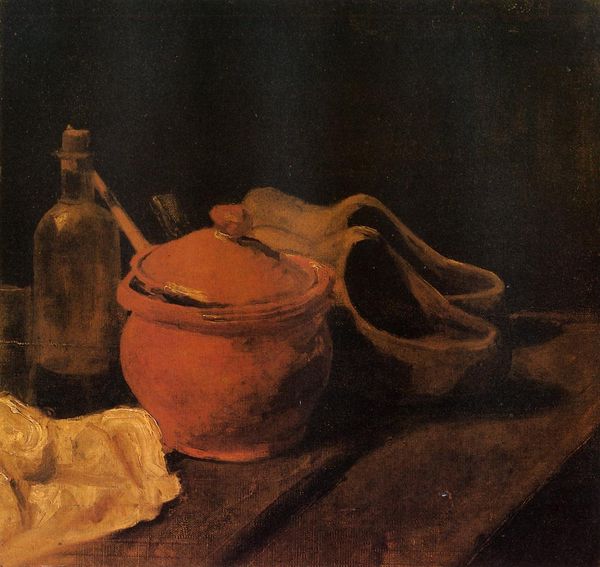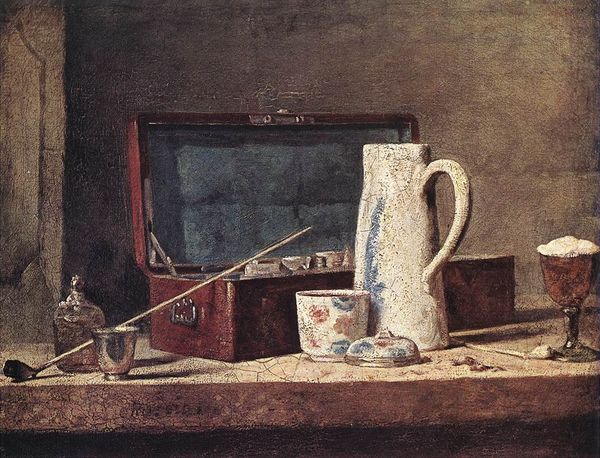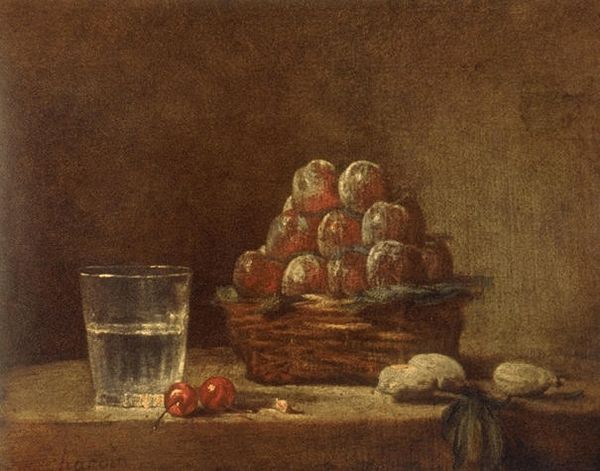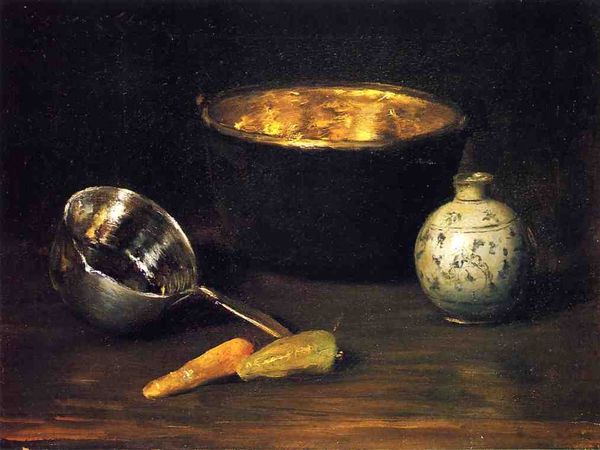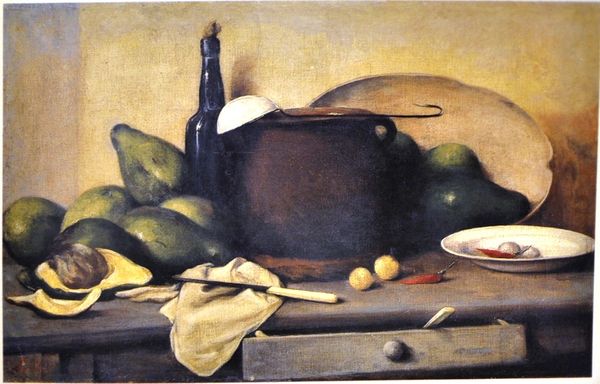
painting, oil-paint
#
baroque
#
painting
#
oil-paint
#
oil painting
#
genre-painting
Dimensions: 21 x 17 cm
Copyright: Public domain
Curator: Standing before us is Jean-Baptiste-Siméon Chardin’s “Still Life of Cooking Utensils, Cauldron, Casserole and Eggs,” painted in 1734 using oil paints. It's a wonderful example of his intimate approach to still life. Editor: My first impression is one of understated domesticity, a quiet harmony of objects. The tones are muted, almost monochrome, and there’s a tangible sense of weight to these everyday items. It makes me think of the work involved in simply preparing a meal. Curator: Absolutely. Chardin was a master of elevating the ordinary, depicting objects from the bourgeois kitchen with dignity and respect. It resonates with the shift in 18th-century French art towards genre painting. Rather than mythological scenes of courtly subjects, Chardin found value in depicting humble life, shaping public appreciation for those unseen laborors in their midst. Editor: The arrangement itself seems very deliberate, even staged. The cauldron commands attention, its copper catching the light, a silent guardian watching over the humble eggs and cooking vessels, a display of cultural identity through carefully arranged everyday tools. Curator: Chardin often presented carefully composed arrangements reflecting the growing influence of the Enlightenment's values of simplicity and order in daily life. It mirrors the era's aspirations for accessible education and transparent social values. By idealizing common objects he was democratizing taste, implying those values in everyday life. Editor: The eggs stand out as potent symbols of life and nourishment. Their proximity to the other objects suggests a process, a transformation of raw ingredients into something more. Do you think their whiteness contributes to that sense of purity, or potential? Curator: Very possibly. They provide not only a visual relief against the darker tones but also would remind viewers of values such as household economy, thrift, and, perhaps, the virtuous management of domestic affairs. It is Chardin's method: imbuing seemingly banal scenes with moral undertones reflecting larger social ideals. Editor: Thinking about the composition, it has an amazing way of conveying a deeper message. The careful arrangement and use of subtle symbols make me see this simple painting not just as an art piece, but as an open invitation into 18th-century domestic ideals. Curator: Yes, through focusing on the mundane aspects of ordinary life, it indirectly helped solidify a market for genre scenes and a bourgeois understanding of art, with art reflecting familiar, everyday values rather than idealized portrayals of a life few could reach. Editor: I will certainly carry with me now a deepened respect for genre painting, as it carries in it reflections of cultural symbols that are sometimes easily taken for granted, thanks to artists like Chardin.
Comments
No comments
Be the first to comment and join the conversation on the ultimate creative platform.
